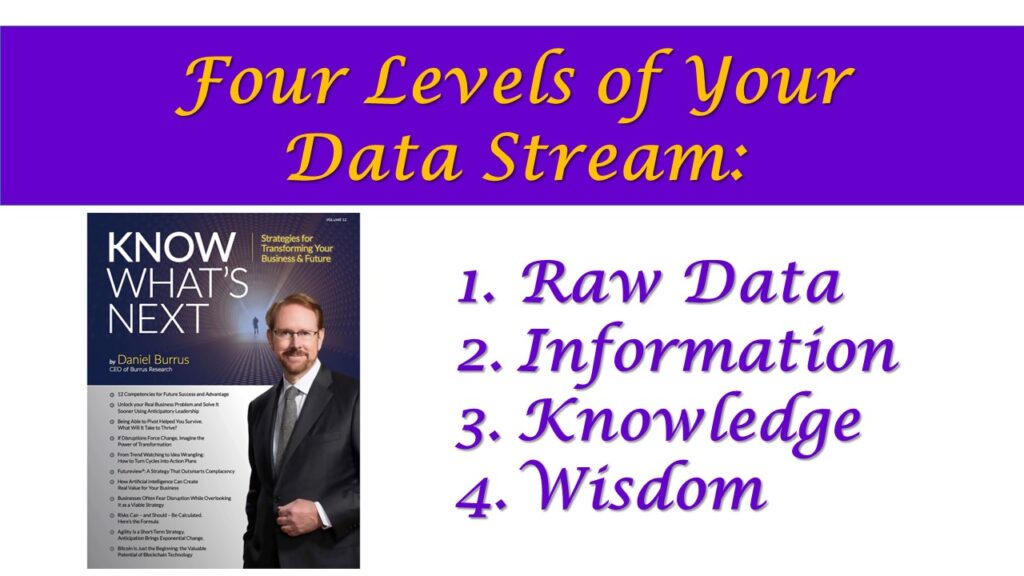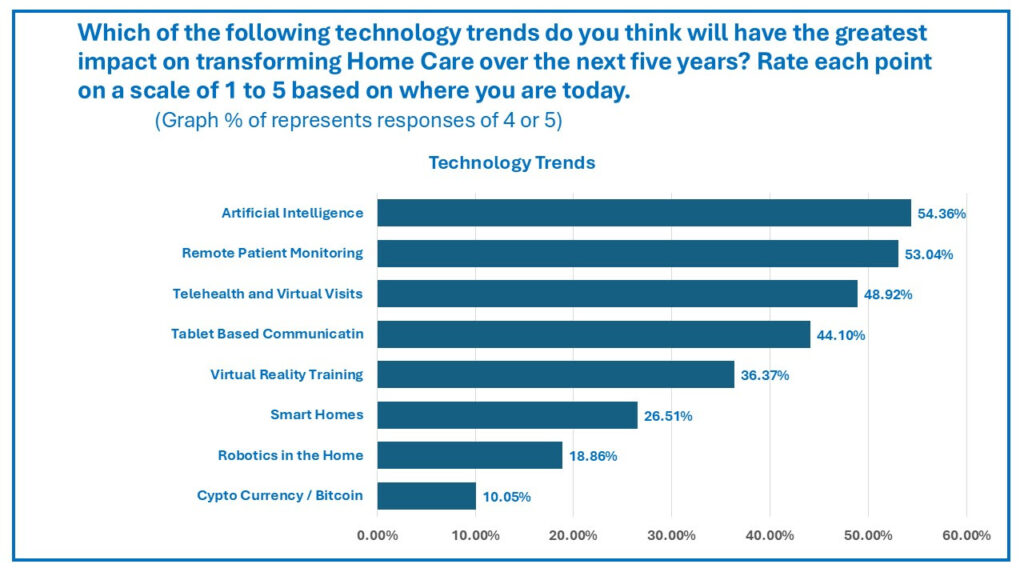I just received a copy of a newsletter from my friend and professional speaking colleague, Daniel Burrus. Daniel is America’s leading technology forecaster. He’s a technology researcher, keynote speaker, and strategic advisor to Fortune 500 Companies.

Many years ago at our National Speakers Association, Danial taught me about “The Four Levels of Your Data Steam”. Since then he has helped me learn about how to use information and data to track trends. He has taught us about “Soft Trends”, and “Hard Trends”. Soft Trends are patterns of change that may happen, and Hard Trends are changes that absolutely will happen. HIs ability to track trends and identify Hard Trends in technology are amazing.
How Leaders Use Trends to Anticipate the Future
Daniel Burrus has made a science and a huge business of using Hard Trends to anticipate the future. His latest book is called The Anticipatory Organization, and he writes about how to use data, information, knowledge, and wisdom to identify hard trends that will surely happen, and how to anticipate the disruption that these trends may cause.
In his latest newsletter, he writes about why anticipation is more powerful than agility. Here’s what Daniel says about how to anticipate the future:
“Agility is your reaction time. Anticipation is your ability to predict the race and take the lead before the starting gun.
Reactive organizations:
- Constantly pivot to handle the latest crisis
- Lose time, money, and morale from the chaos of short-term thinking
Anticipatory organizations:
- Identify predictable future events
- Position themselves to benefit from those events before they arrive
Being agile helps you survive. Being anticipatory helps you dominate.
And the best part? Anyone can develop this mindset—it’s not a talent, it’s a choice.”

Technology Trends in Home Care
In January of this year we released the 2025 Future of Home Care Study White Paper, created by Leading Home Care … a Tweed Jeffries company, and sponsored by AxisCare, the leading Home Care Operating System software.
This industry research study and the paper that came from it examined seven specific factors that are affecting the Future of Home Care. This is the second year of the study, and the new data helped us understand more clearly how Home Care CEOs and industry thought leaders see the future of our industry.
One of the factors we asked about is Technology, and technology trends in Home Care. Our survey respondents helped us identify the technologies that are most likely to shape our industry:
- Artificial Intelligence
- Remote Patient Monitoring
- Telehealth and Virtual Visits
- Tablet Based Communication
- Virtual Reality Training
Where are you in exploring or applying these technologies?
In his newsletter, Daniel Burrus gives us some suggestions for applying technology:
“Technology evolves fast—and too many businesses only adopt new tools after they’re mainstream. But that’s a losing strategy in today’s world.
If you want to be a leader, you need to:
- Spot disruptive tech before your competitors do
- Experiment early, even if it means failing forward
- Integrate transformative tools like AI, automation, blockchain, and cloud into long-term strategy
When used in an anticipatory way, technology becomes more than a utility—it becomes a catalyst.
Don’t ask, “Should we use this tool?”
Ask, “How can this tool help us shape the future?”





